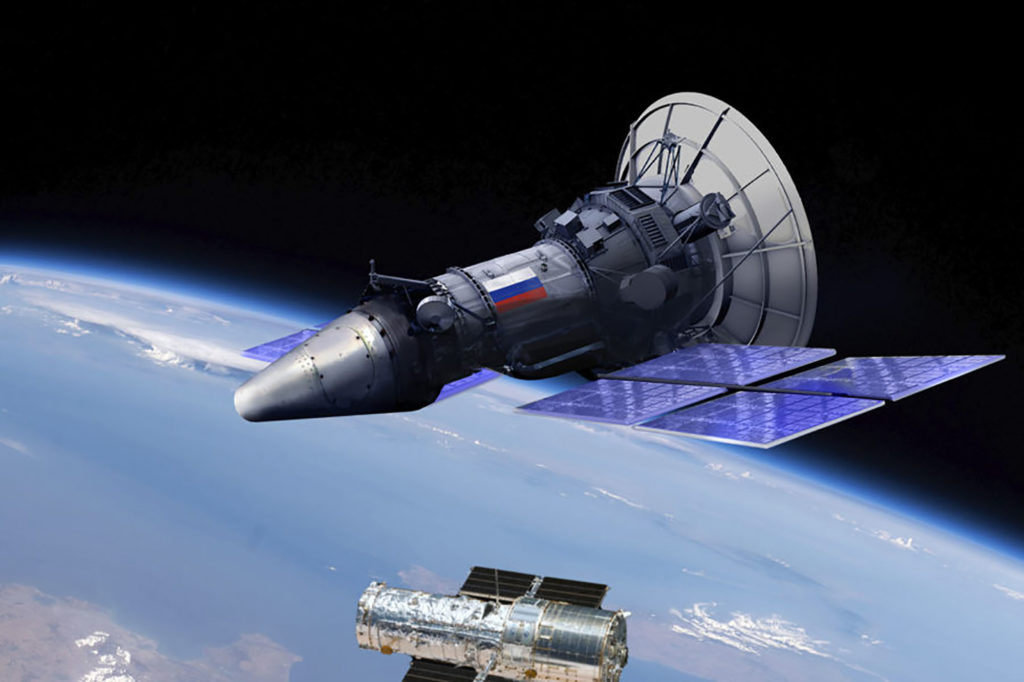Russia, China, North Korea, and Iran are cooperating more in space, raising concerns for the head of U.S. Space Command.
“It does appear there is a growing sense of cooperation in the space sphere between these four countries, at least bilaterally within these four countries,” warned Space Command’s Gen. Stephen N. Whiting June 24 on a visit to AFA’s Mitchell Institute for Aerospace Studies. “That’s something we’re keenly observing.”
Analysts and officials are worried that the interests of the four countries are increasingly aligned, with some warning the authoritarian states are forming an “axis” in opposition to the U.S. Others suggest such fears are overstated.
SPACECOM isn’t taking any chances. “We’re very interested in those relationships,” he said. “As we’ve seen Russia struggle on the battlefield in Ukraine, it appears that they’ve gone to these other countries … looking for assistance and maybe they’re willing to share or cooperate more in the space sphere. Certainly, that’s of concern to us.”
In February, a Russian rocket carried an Iranian satellite into orbit. In March, Russia and China announced plans to build a nuclear power plant on the moon in the 2030s. And most recently, Russian President Vladimir Putin and North Korean leader Kim Jong Un signed a defense pact after reports that Russia has already helped North Korea’s budding space program. Whiting noted that North Korea could benefit from Russian expertise in launching both ballistic missiles and spacecraft.
Russia has used Iranian and North Korean weapons in Ukraine and received support from China to up its arms production, U.S. officials have said. And while Whiting noted that the four countries are mostly cooperating on a bilateral basis, their growing ties adds a layer of complexity to a space domain that is growing more and more contested.
Russia’s Counterspace Weapon
In late May, U.S. officials announced Russia had launched a counterspace weapon into the same low-Earth orbit as a U.S. government satellite. Asked how his command had assessed the Russian launch to be a threat, Whiting cited a mix of intelligence and data from previous Russian launches.
“We’ve been tracking objects on orbit for decades and decades and decades,” said Whiting. “And so when we saw the launch in the middle of May, we can look at those orbital parameters and we can compare that launch to launches that the Russians did in 2017, 2019, 2022 that look like this class of counterspace weapon that they’ve tested previously. And now it appears that they put on orbit in an operational capacity.
“And then we look at where they launched it, and they launched it what we call co-planar to a national security satellite. And that doesn’t seem to be accidental, because they’ve done that multiple times in a row now and being coplanar gives them a short amount of operational response time to potentially hold at risk one of our satellites.”

Pentagon press secretary Maj. Gen. Patrick S. Ryder noted at the time of the launch the similarities to previous 2019 and 2022 tests.
In late 2019, the Russians launched a satellite that then released a second satellite. Both satellites then followed a National Reconnaissance Office satellite. Several months later, U.S. officials said the sub-satellite had released another object, apparently firing a projectile at high speed. In the years that followed, then-Chief of Space Operations Gen. John W. “Jay” Raymond compared them to Russian “nesting dolls.”
A similar test preceded that one in 2017, with a nesting satellite reportedly following a U.S. satellite and firing a projectile into space.
The Wall Street Journal reported that the Russians launched a satellite in February 2022 designed to test components for a nuclear antisatellite weapon.
Breathtaking Growth
While Russia continues to test its antisatellite capabilities, China is rapidly expanding in space too, Whiting said.
“I mean, it really is something to behold, and you can kind of bucket that into two aspects,” Whiting explained. “One is how quickly they’ve moved to field counterspace capabilities, everything from offensive cyber capabilities to jammers for GPS [and] SATCOM, high energy lasers, direct ascent ASATs, on-orbit capabilities, just across the breadth of capabilities from reversible to nonreversible, we’ve seen them move very quickly. They’ve also moved very quickly to build their own space capabilities to enable their terrestrial forces.”
Whiting has previously called China’s rise in space as “breathtakingly fast.”
Not surprisingly, Whiting’s first trip as SPACECOM boss was to the Indo-Pacific, where he visited the headquarters of U.S. Indo-Pacific Command in Hawaii, as well as allies in Japan and South Korea.
Discussions with INDOPACOM focused on ensuring SPACECOM and the regional command were in sync. In Japan and Korea, common concern over China’s actions in space are fueling desires to work together to counter them.